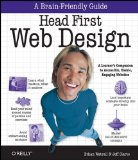Twickie will display threaded Tweets as text on a blog or website. More. . .
Are you posting Twitter conversations on your blog? Do you wish you had a way to make them look good so the conversation was easier to follow? There’s a very new application that will collect a thread and provide some code to paste on your blog. It’s easy and free.
The tool is called Twickie. Right now it’s on Chris Pirillo’s personal site, but it may move to its own domain in the future. It’s isn’t perfect yet; it’s just getting started, though it works pretty well already.

It’s easy to use. No downloads. Just go the Twickie site, and log in to Twitter. Your most recent tweets will appear. If you want to collect a thread you click a button that says “Get @s” and the thread is given. For any threaded conversation, code is provided.

The code is basic HTML including some inline styles that make the thread look like Twitter conversations. It can be pasted on a blog or web page. Here’s an example. The conversation is less than wonderful, but it does illustrate the point. I copied the code from Twickie to create the following:

Miraz: Always happy to oblige. I hope things are well where you are. Rain here and more Webstock. 🙂
about 17 minutes ago

falmouthdesign: What sort of reply are you looking for? Did I miss the question?
about 24 minutes ago

vdebolt: Need @ replies for a BlogHer post. Would you reply to this, please, please, please. You are truly kind!
about 45 minutes ago
Looks good, doesn’t it? It’s text, with clickable links to profiles on Twitter. A big improvement over showing Twitter conversations as images.
As I said, it isn’t perfect. For example, I replied to some of these replies, which brought in another reply. Twickie doesn’t pick these up as part of the original conversation. Each Tweet I sent out was the start of its own thread. The only @s that got pulled in, were the ones sent directly in response to the original Tweet. It would be great if Twickie recognized that a reply in response to a reply is part of the thread. Maybe I’m asking for the impossible.
You can’t do a Twickie search for hash tags. I’d like to see that added. I think it would be especially useful when following breaking news or tracking events and conferences. There are sites that track hashtags, but not threaded.
This tool is so new, I couldn’t find anyone using it yet. If you give it a try and post something on your blog using Twickie, let us know so we can take a look.
More Information: Twickie video with Chris Pirillo. You can follow @twickie on Twitter to keep up with news about this tool.
Cross posted at BlogHer.








